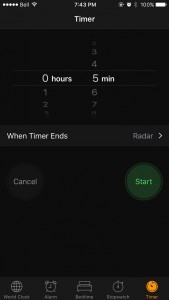 It’s the middle of October and you know what that means? Pumpkin spiced lattes, a chilly breeze, Halloween décor, and midterms. Around this time of year, students often find their schedules filled with due dates, exams, quizzes, labs, papers, and assignments. During times like these, time is of the essence.
It’s the middle of October and you know what that means? Pumpkin spiced lattes, a chilly breeze, Halloween décor, and midterms. Around this time of year, students often find their schedules filled with due dates, exams, quizzes, labs, papers, and assignments. During times like these, time is of the essence.
On that note, here is a life-hack to help save time: one of the most effective ways to maximize productivity is to minimize distractions. From personal experience, an hour of distraction-free studying is generally equivalent to 5-6 hours of distracted studying. Therefore, by staying focused, you can actually save a lot of time. So, how can you stay focused when studying?
Step 1: Identify What Distracts You
This step is important because you cannot eliminate distractions until you have identified them. Distracting factors can be social, physical, or mental. To identify what distracts you, allocate some time to complete a task. Then, make note of what drives your attention away from that task. I tried this method for just 2 days and I discovered a lot about what breaks my focus. I have shared my list with you so that you get a sense of how these social/physical/mental distracting factors can hinder concentration.
- Social Distracting Factors
- Social Media and Texting – I’m tempted to check the notifications on my phone
- Phone calls – Maybe that 2 hour phone call with my best friend wasn’t the best idea.
- Physical Distracting Factors
- Sounds – listening to the radio while studying isn’t effective for me because I pay more attention to the song lyrics than I do to my schoolwork
- Study Space – When I study on my bed, I’m more likely to fall asleep.
- Mental Distracting Factors
- Thoughts – What am I going to cook for dinner? When should I do my laundry?
- Daydreaming – Would studying be easier if I could time-travel?
Step 2: Devise a Plan to Help Minimize Distractions
Every distracting factor is unique, and it affects people differently. For example, studying on my bed makes me sleepy so I am more productive at my desk. However, I have friends who find desks uncomfortable, and study better on their beds. Therefore, there is no “one-plan-fits-all” to help minimize distractions. You need to strategically find ways to avoid engaging in the distracting activities unique to you for the intervals in which you aim to be productive. For example, if you spend too much of your “study time” checking your texts, setting your phone to “Airplane Mode” for 30 minute intervals would reduce the temptation to check your notifications. If you ever need help devising plans to minimize distractions, you can drop-in or book an appointment at the Academic Success Center. There, a learning strategist will help you develop strategies to maximize your productivity.
Step 3: Take Short Breaks Periodically
Breaking up the overall allocated study time into smaller “distraction-free intervals” increases your chances of staying focused. Taking 5 minute breaks every 20-30 minutes is effective for me. During your break time, go to the washroom, freshen up, stretch, or grab a snack – but make sure breaks don’t go overtime!
Step 4: Reward Yourself
Once you finish your task, be sure to reward yourself with something meaningful to you. This gives you something to look forward to and it keeps you motivated.
If you found this to be helpful, be sure to read the Academic Success Center’s documents on studying, concentration, and memory. The Academic Success Center has a wide variety of online resources to teach you learning strategies to help you succeed. Find out what works for you, and I wish you all the best of luck this midterm season.
See you next week!
Slesha
